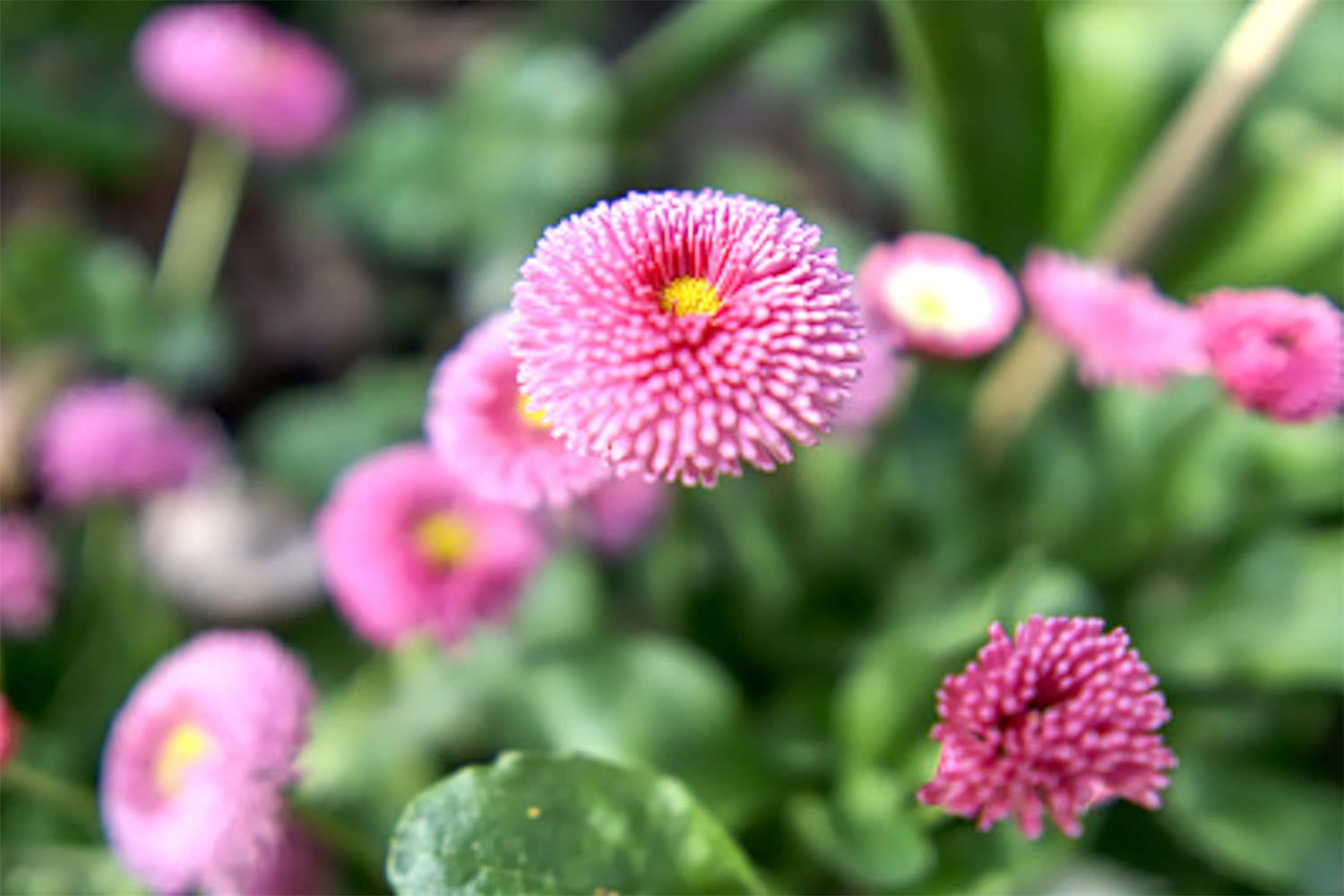How do daisies reproduce?
Last Update :2024.11.14
Article Catalog
Sowing: Sow seeds mixed with fine sand, covered with 0.5 cm thick fine soil, covered with a sunshade net and watered thoroughly. Seedlings will emerge in about 10 days at a temperature of 28°C. The seedlings can be transplanted after they have 2-3 leaves. Division: dig out the old stubble, cut off the lateral buds with the existing root system and the old roots, and transplant them to new pots. Cutting method: Cut branches with 3-5 nodes and 8-10 cm long, and bury them into the soil to a depth of 1/3-1/2 the length of the cuttings. Keep the soil moist, avoid waterlogging, and provide shade during hot seasons.

sowing and propagating
The grafting method of daisies has high technical requirements and the reproduction process is relatively cumbersome. Without superb cutting, grafting skills, selection of improved seeds, artificial pollination and other technologies, it is difficult to reproduce successfully. This propagation method is only carried out in nurseries when a large number of seedlings are needed.
To raise daisies at home, you can propagate them by sowing, dividing and cutting.
Sowing and propagation

Sowing time ( Differences between north and south)
Sowing in the south is mostly done in autumn from August to September. In the north, sowing is mostly done in spring, but it can also be sown in autumn, but daisies should be moved into a relatively warm indoor environment in winter.
Covering with soil/watering
Mix the seeds with fine sand and spread them, covering them with fine soil about 0.5 cm thick. After sowing, cover with a shading net and water thoroughly. Watering should be done with a fine spray to prevent soil surface from compacting.

Temperature/Humidity
After sowing Keep the temperature at around 28°C and cover with plastic film when it is cold and rainy in early spring to maintain soil moisture and temperature. After about 10 days, the seedlings will be unearthed. Remove the sunshade net or plastic film. When the seedlings have 2-3 pieces, they can be transplanted to the field.

Propagation by divisions
Due to fruiting The seedlings vary greatly, and some excellent varieties can be propagated by division method, but the growth potential is not as good as that of real seedlings, and the fruiting is poor. In mid-to-late March, the old chrysanthemum cauliflower can be dug up to expose the root neck. The lateral buds with the existing root system and the old roots can be cut off and transplanted to a new pot. Propagation by division can be carried out when new shoots sprout.
Propagation by cuttings

Growing throughout Propagation by cuttings can be carried out in any season, and the survival rate of cuttings from April to June is the highest.
It is best to use new soil mixed with composted organic fertilizer for the seedbed.
Cut branches with 3-5 nodes and 8-10 cm long, remove the base leaves, and bury the branches into the soil to a depth of 1/3-1/2 the length of the cuttings.
Keep the soil moist after cutting, avoid waterlogging, and shade in hot seasons.
Propagation by division
Propagation by cuttings
- END -
Cultivation methods and precautions for Chlorophytum and Pothos

Sunshine: Chlorophytum and Pothos prefer a shady growth environment, and it would ...
Methods and precautions for cultivating Aesculus aesculata

Fertilization: Use more human feces as fertilizer and less chemical fertilizers in...